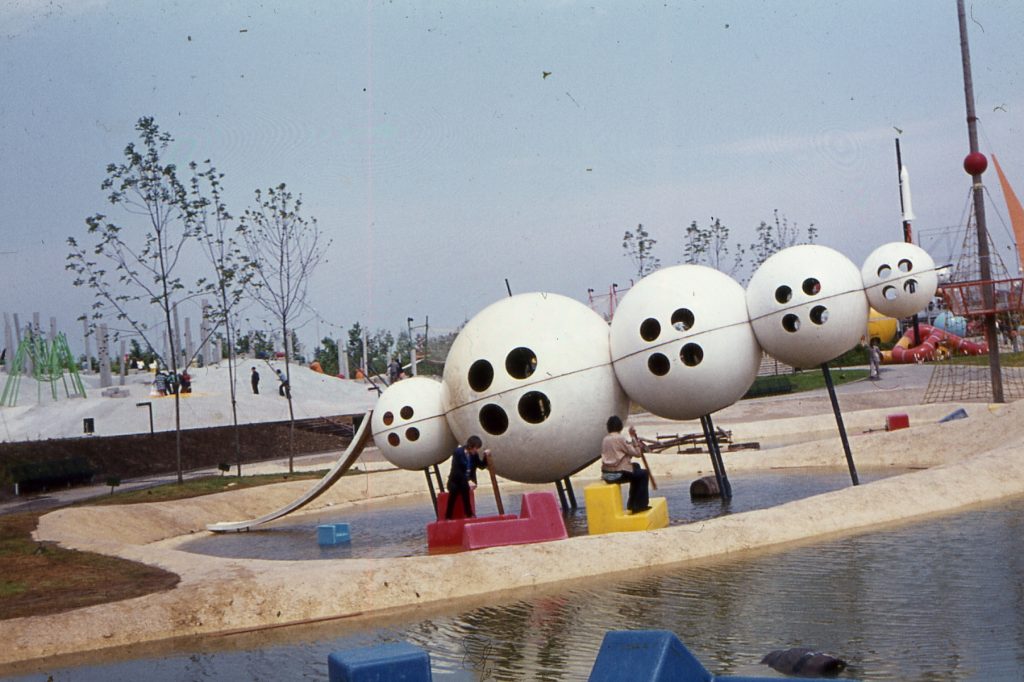
Would such a fantastic playground still be possible today? WIG 74, Kurpark Oberlaa
© MA 42 – Wiener Stadtgärten
Who decides what our cities and buildings look like? Is it still the architects and city planners, or did the law take over long ago? The exhibition 'Form follows Rule' shines a spotlight on these regulations, without which nothing happens in architecture. Who makes the rules, what do they tell us about our society, and were things really any better in the past? Clear and concrete, critical and, in some of the examples, even inadvertently comical, the Architekturzentrum Wien exhibition uncovers this otherwise invisible background to architecture and urban development.
“With a look behind the scenes in the building sector, we are aiming to provoke a broad public debate”, says Angelika Fitz, director of the Architekturzentrum Wien. What are the rules a society needs because they safeguard our lives and facilitate communal life? Which regulations go too far, or primarily fulfil specific interests? Curator Katharina Ritter adds: “The exhibition is intended to show that the growing number of regulations is the result of an overall societal development for which we all bear the responsibility. The world is becoming increasingly complex, and lawgivers are responding to this change.”
It has often been said that an architectonic idea can only freely unfold today on a paper napkin. It is, after all, true that as soon as a design manifests itself in a concrete form it has a web of national and federal state laws, ordinances, guidelines and standards to meet. The building code for Vienna has grown from 30 in 1829, to 140 articles and around 20 supplementary laws today. Many in the building sector resent this ever increasing number of national and international standards. On the other hand, standardisation has become indispensable in a globalised world — just think of DIN-A4 paper.
The exhibition demonstrates the extent to which the appearance of streets, houses and parks is dictated by the rules and regulations. In large-format case studies, visitors can literally look behind the façade of architecture, and discover what lies behind much of what we see. Comparisons with other countries show how similar challenges are sometimes met with very different regulations within Europe. Do kids in Germany shout louder than they do in Austria, do Parisian bakers bake with less odour than their Viennese counterparts, or are the legs shorter somewhere else? 1:1 installations make these differences physically tangible, while posing the question: What do a country’s regulations say about the dominant concept of society?
It was an achievement that the Vienna building code of 1930 shifted the focus onto citizen protection and the function of caring for the weakest in society. “Fortunately, the level of safety has continually risen. However we are witnessing a ubiquitous development where the personal responsibility is being substituted by warning signs, where playgrounds are being designed for helicopter parents and fences everywhere are getting higher”, says Curator Karoline Mayer. Although according to Curator Martina Frühwirth, “continually rising standards of safety and quality are obviously not making us any more content. On the contrary, our affluent society has become more litigious.”
Between public wellbeing, personal responsibility and an ‘all-risks insured’ mentality, where are developments in society and so in the building sector heading? Interviews with architects, project developers, technical experts and building authority representatives shed light on the current situation and explore remaining interpretational leeway. Visitors to the exhibition can test their own proclivity to put safety first, and add their own examples and suggestions to a complaint wall.
“On the one hand, the exhibition helps to demystify architecture”, says Angelika Fitz, “but on the other hand, faced by the vast array of current regulations we also see the enormous creative achievements of the architects concerned.” Sometimes architects find elegant ways to make use of the rules as agencies of design, sometimes they collaborate with legal experts and activists to explain people their rights. Because knowledge is power. Furthermore, to cite a strategy from Asian martial arts, “Use the opponent’s power” many projects work actively with the logic of the law and, despite or precisely because of the determining factors, create a quite special architecture.
Curators: Martina Frühwirth, Karoline Mayer, Katharina Ritter, Az W
Exhibition design: PLANET architects, Stefan Fuhrer
